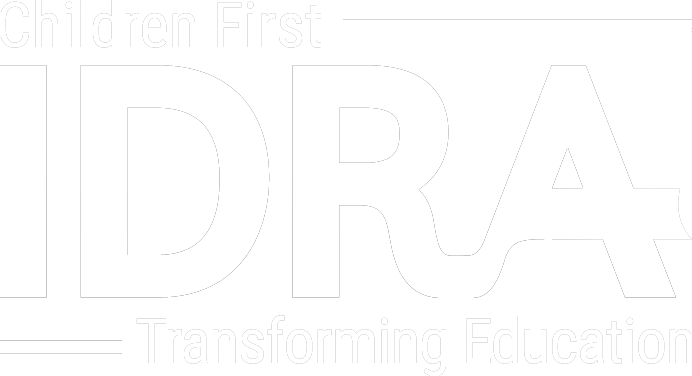 Students’ futures should not depend on their race or ethnicity, family income or neighborhood.
Students’ futures should not depend on their race or ethnicity, family income or neighborhood.
IDRA advocates with communities for funding solutions that ensure all students have access to excellent schools.
Learn more about IDRA’s work to ensure fair school funding for all students below.
Sign up to receive our email updates!
The lack of equitable funding has been a decades-long problem for many schools that serve students of color, emergent bilingual students and students from families with limited economic resources. Consequently, the result is underfunded school systems where, despite a school’s best effort, many students receive a poor quality education.
Students, families, communities and entire state economies benefit from schools that are excellent and equitably funded. By championing and ensuring fair funding for all students, state policymakers send the message that each child is worthy of receiving the best quality education.
 Georgia leaders have a constitutional obligation to provide fair and full funding for Georgia’s public schools. The state must take steps to bear more of the per-pupil cost of education. Since 2013, the state share of per-pupil funding has dropped from 51% to 40%.
Georgia leaders have a constitutional obligation to provide fair and full funding for Georgia’s public schools. The state must take steps to bear more of the per-pupil cost of education. Since 2013, the state share of per-pupil funding has dropped from 51% to 40%.
Historically, Georgia has spent well below average in per-pupil school funding compared to other states in the nation. Funding in Georgia has not only been lower than other states in the South and across the United States, but it has also not recovered from the decrease in funding that occurred from 2008 to 2012 as a result of the Great Recession.
Even at “fully funded” levels, such as in 2020, Georgia’s education funding formula, the Quality Basic Education Formula, produces school funding far below other parts of the country. Furthermore, in the most recent version of Georgia’s state budget passed in 2021, the Georgia General Assembly returned to the trend of cutting funds by slicing nearly $1 billion from the Georgia Department of Education’s budget (with over $950 million coming at the expense of local K-12 districts) from the QBE formula. Although the 2022 budget restores nearly $600 million of these cuts, the $338 million cut that remains still represents the 18th year of the last 20 that Georgia leaders will be underfunding education based on Georgia’s own formula.
See New Factsheet: 6 Steps to Fully Fund Georgia Schools – March 7, 2025
Inequitable Funding Hurts Georgia Students
Unfair funding in the classroom for emergent bilingual students, students from families with limited incomes, and other student groups means fewer educational resources for needed programs, up-to-date technology and equipment, and sufficient teaching support.
Policy Recommendations for Georgia
To ensure fair funding in schools Georgia education leaders should:
- Protect the state education budget from cuts to ensure, at a minimum, the Quality Basic Education formula is fully funded. Georgia has only fully funded the QBE formula three times in the last 25 years, underscoring a chronic underinvestment in public education. The ongoing decrease in the state share of per-pupil spending worsens financial challenges for schools, particularly in under resourced communities. And federal COVID-19 relief funding that helped fill gaps is ending (Creven, 2024). The loss further jeopardizes education funding stability and equity.
- Support schools serving students living in poverty by providing additional state funding via an “opportunity weight” in the QBE formula. Georgia is one of only six states that does not provide dedicated funds to help local schools address the unique needs of educating students from families who have limited economic resources (McKillip & Farrie, 2019).
- Increase the state’s share of educating students by including cost-of-living adjustments in the funding formula. The lack of cost-of-living adjustments in the QBE formula means that school districts are forced to supplement their budgets with local property taxes, exacerbating wealth-dependent disparities between districts (Owens, 2023).
- Repeal current voucher programs and reinvest those funds into public schools to ensure the state serves all Georgia students, particularly students with disabilities. Georgia is diverting public money into privately-run schools through vouchers. These programs have less accountability and oversight than their public counterparts, especially for serving historically marginalized students (Ladd, 2022).
- Commission a modern cost study to understand what schools need to educate all students and to lead to fully funding the Georgia public education system. The QBE formula has not been substantially revised sits its passage in 1985. Legislators should supplement the findings of the Senate Committee to Review Education Funding Mechanisms created by Senate Resolution 650 in 2022 with a comprehensive cost study. If a modern cost study cannot be commissioned, leaders should revisit student-based funding recommendations made under former Governor Nathan Deal’s Education Reform Commission (Knapp, 2015).
- Increase the English to Speakers of Other Languages (ESOL) program allotment to ensure schools are adequately equipped to serve our growing English learner population. Georgia has the seventh largest population of English learner students in the country. School districts must have the necessary resources to educate these students and engage their families. Georgia must also expand access to high quality curricula and instructional materials that emphasize the inherent value of multilingual learners.
For more information, contact Terrence Wilson, J.D., IDRA Regional Policy and Community Engagement Director (terrence.wilson@idra.org).

